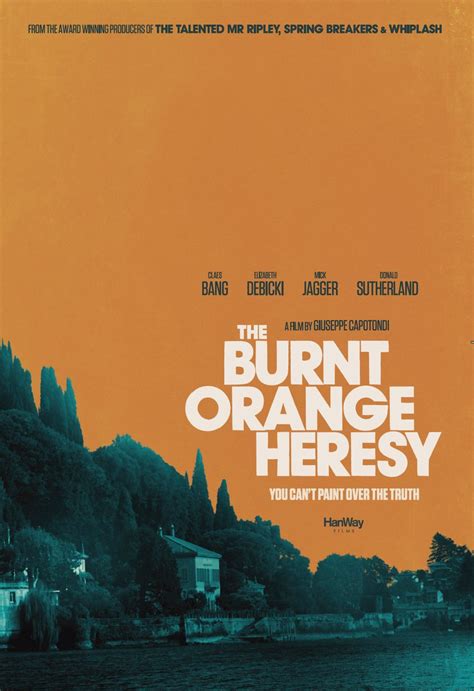The Burnt Orange Heresy

Description:
An atmospheric art-world thriller that follows a calculating curator who accepts a dangerous assignment from a reclusive painter. As he plans a daring art heist, he navigates glamorous dinners, power plays, and a web of double-crosses. Desire and ambition pull him deeper into deception, until the truth becomes as elusive as a perfect pigment. In the end, art, money, and reputation prove costlier than any masterpiece. The film probes how vanity corrupts judgment and how fragile trust can topple the most elaborate schemes.Keywords:
Con Artist, Thriller, Neo Noir, Art World ThrillerWhat is the movie Burnt Orange Heresy about?
"The Burnt Orange Heresy" is a psychological thriller directed by Giuseppe Capotondi, based on Charles Willeford's novel. The story follows art dealer James Figueras, who is seduced by the chance to secure a coveted painting from reclusive artist Jerome Debney. As Figueras and his lover, Berenice, become entangled in a web of deceit and ambition, they uncover dark secrets about the artist and the lengths to which people will go for art and success. The film explores themes of obsession, morality, and the art world’s complexities.
Is The Burnt Orange Heresy a good film?
"The Burnt Orange Heresy" is generally well-received for its intriguing plot and strong performances, particularly by Claes Bang and Elizabeth Debicki. The film, directed by Giuseppe Capotondi, is a psychological thriller that explores themes of art, deception, and morality. Critics have praised its stylish direction and atmospheric cinematography, though some found the pacing uneven. Overall, it's regarded as a compelling watch for those interested in art world dramas and thrillers.
What is the significance of the flies in the burnt orange heresy?
In "The Burnt Orange Heresy," flies symbolize decay, corruption, and the insidious nature of desire and ambition. They appear during pivotal moments, reflecting the characters' moral deterioration and the consequences of their actions. The protagonist, James, becomes increasingly entangled in a web of deceit and betrayal, and the flies serve as a reminder of the darker aspects of human nature and the inevitable consequences of pursuing one's desires at the expense of others. This motif underscores the film's exploration of art, authenticity, and ethical boundaries.
What is the meaning of the burnt orange heresy?
In "The Burnt Orange Heresy," the title refers to a complex notion of betrayal and the moral ambiguity surrounding art and authenticity. The "burnt orange" symbolizes a vivid, yet distorted perception of truth and beauty, while "heresy" suggests an act of defiance against established beliefs. The film explores themes of deception, the art world, and the lengths individuals will go to for ambition and passion, ultimately questioning the value of art and the ethics involved in its creation and appreciation.
Explore More Categories: